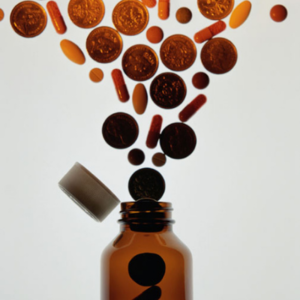By 2023, pharmaceutical expenditure is expected to reach US$1.5 trillion [1]. This causes significant strain on healthcare systems worldwide and work is underway to bring pharmaceuticals’ spending down.
Call for drug pricing transparency
Generics/Research
|
Posted 05/11/2021
 0
Post your comment
0
Post your comment

Now, a study published in BMJ Open [2], has found additional evidence to support healthcare system interventions, market-specific and governmental regulations, in offering a route to lower drug prices. However, the authors highlight that understanding the actual price paid for products is not straightforward and call for further transparency to facilitate regulation of drug prices by purchasers and policymakers worldwide.
The team, based largely at Radboud University in the Netherlands, investigated the recent factors affecting drug prices both at national and international levels. They carried out a systematic review of peer-reviewed drug price comparison studies (between 2004 and July 2021) to assess factors that can determine the price of drugs. These factors were divided into those that can be modified, and those that cannot.
They found that, of the 31 publications under investigation, only one looked at net drug prices, while the rest included retail drug prices. Net drug prices are the prices actually paid by the purchasing healthcare institute, while retail prices exclude various individual pricing agreements such as rebates. As such, the authors explain that due to the effects of various policy measures, the drug price market is opaque and actual (net) price comparisons is impossible.
Looking at the retail prices, they found that there were five key modifiable factors associated with lower retail prices: generic market portion, discounts, tendering policies, central (governmental) purchasing and pricing regulation schemes. Higher retail prices were found when the originator market portion was greater and for systems in which markups are common.
They also found that retail prices were highest in the US, even compared with other high-income countries. However, when adjusted for purchasing power parity, retail prices were highest in low-income countries.
Overall, various healthcare system interventions, market-specific and governmental regulations are consistently associated with lower retail prices. The authors conclude that many interventions are easily implementable in developing or middle-income countries. These include tendering, central purchasing and fixed pricing regulation
schemes.
Related articles
High price of cancer medicines make treatment unaffordable globally
US opinion on prescription drug price and regulation
Generic pharmaceuticals policies in the MENA region
| LATIN AMERICAN FORUM The new section of the ‘Latin American Forum’ on GaBI has been launched. The objective of this new section is to provide you with all the latest news and updates on developments of generic and biosimilar medicines in Latin America in Spanish. View last week’s headline article: Los datos apoyan la intercambiabilidad de los biosimilares de la UE Browse the news in the Latin American Forum! Register to receive the GaBI Latin American Forum newsletter. Inform colleagues and friends of this new initiative. LATIN AMERICAN FORUM Se ha lanzado la nueva sección del ‘Foro Latinoamericano’ sobre GaBI. El objetivo de esta nueva sección es brindarle las últimas noticias y actualizaciones sobre desarrollos de medicamentos genéricos y biosimilares en América Latina en español. Vea el artículo principal de la semana pasada: Los datos apoyan la intercambiabilidad de los biosimilares de la UE Explore las noticias en el Foro Latinoamericano! Regístrese para recibir el boletín informativo GaBI Foro Latinoamericano. Informe a colegas y amigos sobre esta nueva iniciativa. |
References
1. The global use of medicine in 2019 and outlook to 2013: forecasts and areas to Watch. IQVIA Institute for Human Data Science 2019.
2. Janssen Daalen JM, den Ambtman A, Van Houdenhoven M, et al. Determinants of drug prices: a systematic review of comparison studies. BMJ Open. 2021;0:e046917.
Permission granted to reproduce for personal and non-commercial use only. All other reproduction, copy or reprinting of all or part of any ‘Content’ found on this website is strictly prohibited without the prior consent of the publisher. Contact the publisher to obtain permission before redistributing.
Copyright – Unless otherwise stated all contents of this website are © 2021 Pro Pharma Communications International. All Rights Reserved.
Most viewed articles
The best selling biotechnology drugs of 2008: the next biosimilars targets
Global biosimilars guideline development – EGA’s perspective
Related content
Japan’s drug shortage crisis: challenges and policy solutions
Saudi FDA drug approvals and GMP inspections: trend analysis
Generic medications in the Lebanese community: understanding and public perception
Community pharmacists’ understanding of generic and biosimilar drugs: Lebanon case study
Generic medications in the Lebanese community: understanding and public perception

Generics/Research Posted 23/01/2024
Community pharmacists’ understanding of generic and biosimilar drugs: Lebanon case study

Generics/Research Posted 08/09/2023
The best selling biotechnology drugs of 2008: the next biosimilars targets








Post your comment